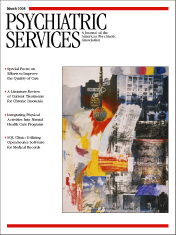Handbook of Culture, Therapy, and Healing
Have you ever read detailed and colorful accounts of the role of dance in a Navajo healing ceremonial, Japanese forms of psychotherapy, or healing the wounds after protracted conflict in Angola? Such accounts are the heart of Handbook of Culture, Therapy, and Healing. More a collection than a handbook, the work comprises writings of anthropologists and clinical researchers who have firsthand experience in cultures throughout the world. It includes descriptions from intracultural perspectives as well as external observations of healing practices. At times, this information is abstracted to cultural and therapeutic principles. The book, rightly, does not attempt to be comprehensive, even for any given culture. Its example-based form helps avoid overgeneralization and ethnocentric bias that can detract from books about transcultural issues.
Handbook of Culture, Therapy, and Healing is oriented toward psychological clinicians from North American mainstream cultures. Given that psychotherapy is largely a Western phenomenon, most of the chapters do not refer to psychotherapy itself but instead discuss holistic and spiritual approaches to healing. The reader begins to appreciate, for example, how two people from different cultures can respond oppositely to the same psychotherapeutic technique. The reader is left with insights about how to develop a therapeutic relationship with someone from another culture.
The chapters vary in their clarity, depth, and perspective, although most are intriguing and informative. Some, such as those cited above, are fresh, thoughtful, sensitive, and poignant. Most chapters can function independently for teaching purposes. However, when read as a book, discussions of anthropological principles are somewhat redundant from one chapter to the next.
The initial section of the book deals with basic issues of cultural anthropology, discussing transcultural principles and commonalities as well as biomedical perspectives. Middle sections focus on multiculturalism in North America, traditional healing in the Americas, Asian approaches to therapy and healing, and psychotherapy and healing in Africa and the Arab world. A small outlook section provides a conclusion and appeal for further research. An excellent bibliography of works on issues in transcultural therapy follows as an appendix.
This book would be valuable for students, clinicians, and policy makers who work with clients ranging from refugees to second-generation immigrant children to persons who seem to be of one's own culture but in fact have clinically significant cultural differences. It would also be useful for clinicians who are planning to work in other parts of the world. Again, Handbook of Culture, Therapy, and Healing is not comprehensive or dogmatic, nor is it a manual of psychotherapy. It works instead by example and by highlighting some commonalities in cross-cultural psychology and healing. The book would be enlightening as an introduction, although also intriguing for those with more experience.
The authors are affiliated with Mission Mental Health Center in San Francisco.



